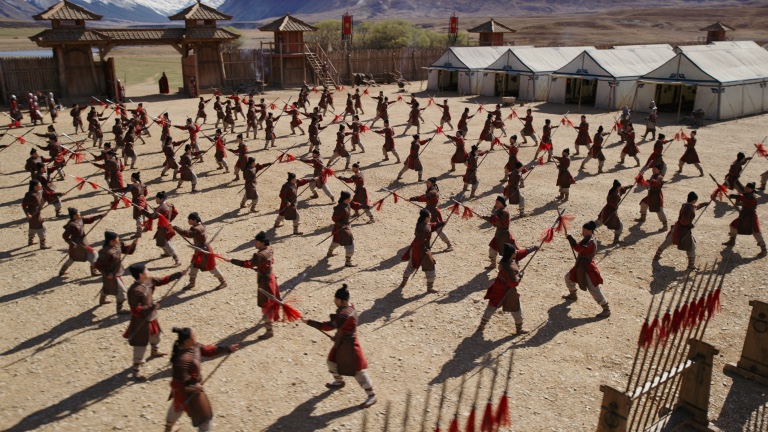
Production designer Jess Gonchor does well with his Coen Bros. work – winning an award from the ADG for No Country for Old Men, grabbing a nomination from the same group for A Serious Man, and now finding himself Oscar nominated for his work on their adaptation of the Charles Portis’ novel True Grit.
But perhaps he does too well – with each new Coen Bros. job “it gets harder,” he laughts. “There’s a little more trust,” he says, explaining that that translates to fewer pointers from the co-director/producter/writer/editors about what they want. “You know what we like,” they tell him. And so they turn him loose to design.
That, of course, is what Gonchor does, but on “some of the other movies, we all knew where we were going to shoot these things,” meaning he could go to the locations and get a sense of the movie’s visual “feel.”
With True Grit, there was some question as to where the production would land, owing to how the state-by-state tax breaks shook out. As it happened, the production wound up filming in Texas and northern New Mexico.
But tax breaks alone weren’t the sole determinant of where the company would wind up: “I needed a place where there was a train line,” he said, and he found it in the town of Granger, about 30 miles outside of Austin.
“It was a town that never took off,” he said, since the tracks were there, but the trains never stopped. That suited his needs perfectly, as they were able to “add on 75% of our movie town to it.”
On A Serious Man he was able to dress the mid-century suburb the way he wanted since the town had been the recent victim of a tornado, which changed site lines by uprooting trees and fences. “I feel like I’ve capitalized on people’s misfortunes!” he laughs again. “It’s like a Biblical story.”
But once he found his rail town to build out, was he inspired by the looks of previous Westerns? “I didn’t draw from any Westerns I’ve ever seen,” he says. “I wanted it to be not like any Western ever seen.”
Part of getting that non-Western look right involved a trip to Ft. Smith, Arkansas, where much of the movie is set. “It was a big city in 1875,” he recounts, “and the biggest fort in the eastern United States.”
Gonchor spent a couple days walking around Ft. Smith’s modern incarnation, looking for whatever clues the layers of history could still offer up. He wanted to know “what was cutting-edge architecture then,” and how that differed from what was being built in Boston, Chicago or New York.
“So you were making an ‘Eastern?’” we ask.
“It was an Eastern!” he agrees.
Visually, they were getting away from “all that landscape” that you usually see in the films of John Ford, moving from Ft. Smith into the tall cottonwood trees in the Choctaw nation, providing scenery – “while fighting seasons,” he adds, “and trying to figure out how not to upstage the story.”
He recounts finding the river he wanted for a dramatic forging early in the story, and spending two weeks with the crew clearing weeds and bramble so the scene could be shot. “This is the first movie I’ve worked on where I feel like I’ve actually gone on the journey with these people,” he says.
Even if that journey points more east, than the period’s traditional “west.”






[…] were going for something historically correct,” he says – bearing out recent comments here by production designer Jess Gonchor, and from that, he proceeded “more instinctively, really” when deciding how the film should […]